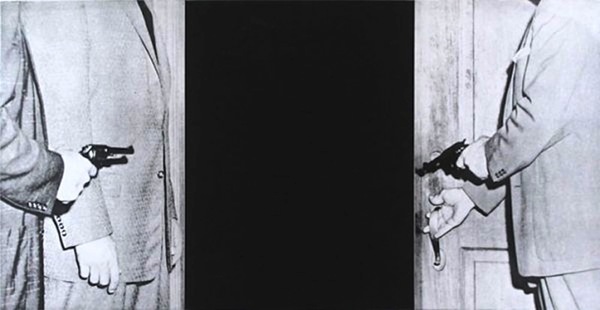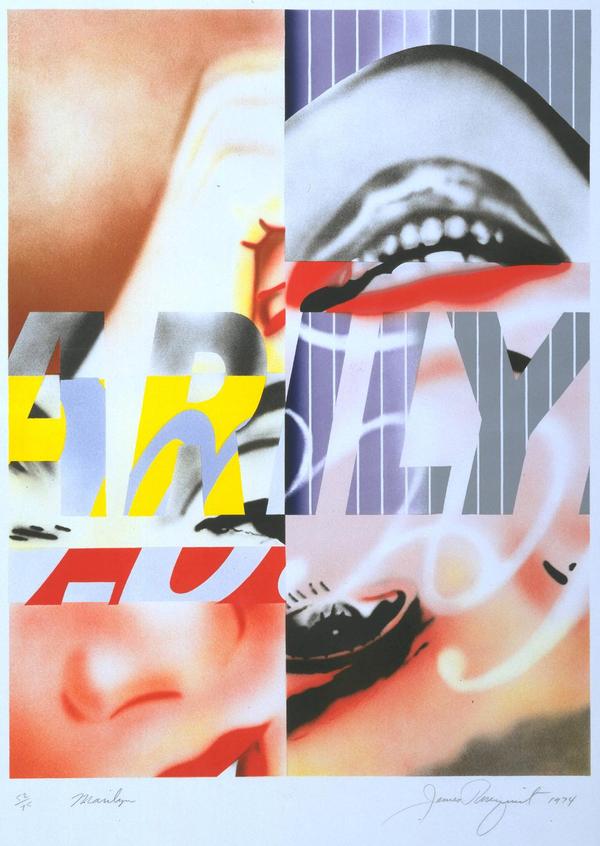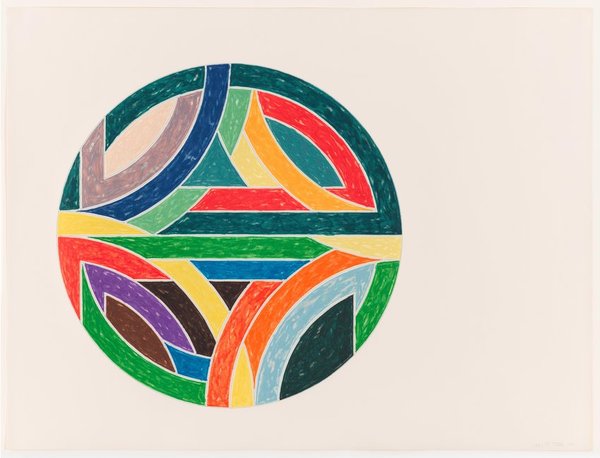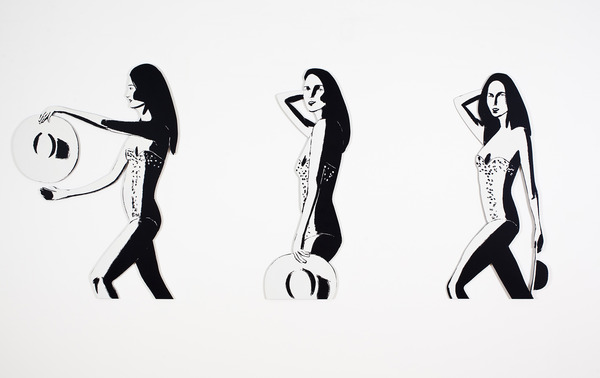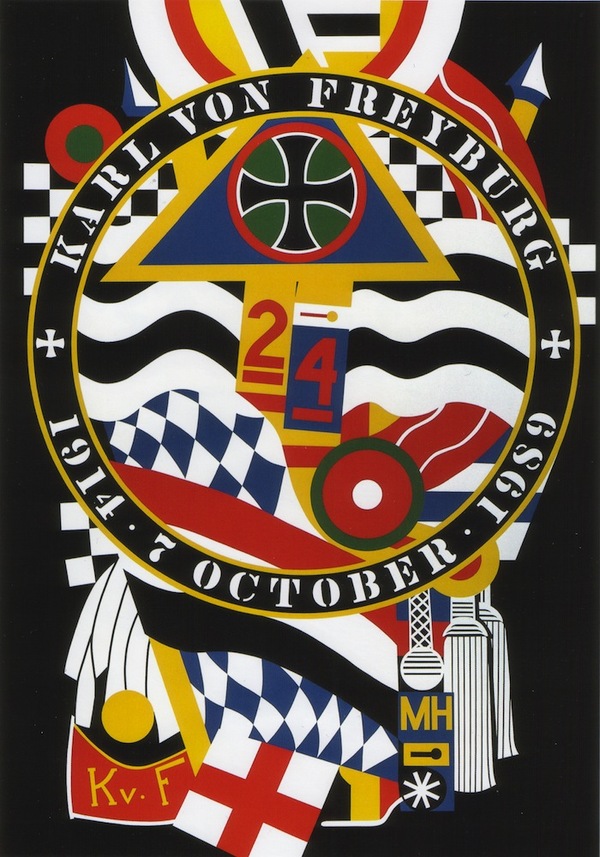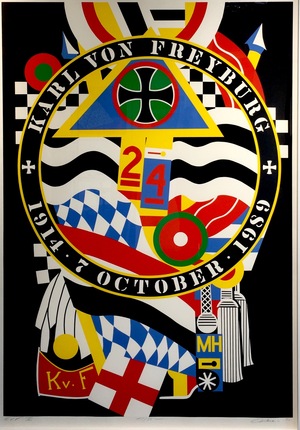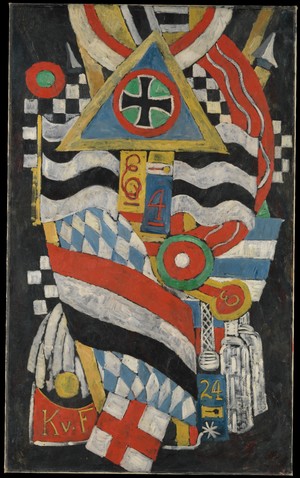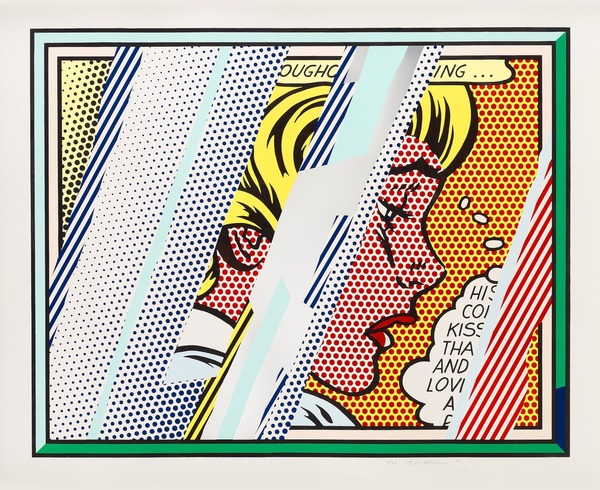
Andy Warhol
Birmingham Race Riot
1964
Screenprint
20 x 24 in.
Edition of 500
About the work:
WARNING: THIS ARTICLE CONTAINS FOUL AND OFFENSIVE WORDS AND VIEWS THAT ARE USED TO PRESENT HISTORICALLY FACTUAL EVENTS ONLY!
THE WORDS AND VIEWS USED IN THIS ARTICLE DO NOT IN ANY WAY REPRESENT THE VIEWS OF GREGG SHIENBAUM FINE ART INC. OR ANYONE ASSOCIATED WITH GREGG SHIENBAUM FINE ART INC.
This week’s Work of the Week (WOW), Birmingham Race Riot is an example of Andy Warhol’s genius, that is often very subtle to the viewer.
Civil Rights photographer, Charles Moore published a photo-essay in Life Magazine covering the brutality black protesters were facing in Birmingham. One photo in particular of a young black protester being set upon by police dogs during the unrest, caught the attention of Andy Warhol, who at that moment was preparing for his first large-scale exhibit abroad, in Paris called “Death in America”
 This exhibition consisted of paintings, of subjects such as car crashes, suicides, food poisoning, the electric chair, gangster funerals, and the Atom Bomb, later to become known as the Death and Disaster paintings.
This exhibition consisted of paintings, of subjects such as car crashes, suicides, food poisoning, the electric chair, gangster funerals, and the Atom Bomb, later to become known as the Death and Disaster paintings.
Three of Moore’s photographs were of a dog attacking a black man and although the theme was not strictly “Death”, Warhol was sufficiently aware of their power to want to include them in his exhibition, consistent with his aim of showing the dark underside of the American Dream. The image is forceful and requires no commentary as the tension, violence and fear are palpable.
In all, Warhol made some ten silkscreen paintings on the theme. They became known as his Race Riot paintings (counterfactually, in reality the images were of a peaceful march disrupted by police), and they represent Warhol’s only overtly political statement, although he himself insisted that Moore’s photographs had merely “caught his eye”.
People who truly understand Andy Warhol, and his art, immediately see the genius of the man and his work. He never talked about about his artwork in a very serious manner. Mistakenly described as “aloof”, Warhol took pleasure at that description, and played it up to the critics, and media.
A perfect example of this, is the way he spoke about the Race Riot paintings. Not speaking about them as a historical, impactful, commentary on the events in American society of the time, but rather downplaying them as images that had merely “caught his eye”, is the exact genius of Andy Warhol.
Warhol did not have to describe his art, or lecture about his ideas, but rather, he preferred that his artwork did it for him. The idea of turning this photograph of a historically tragic dark time in America, into a work of art, presupposes the importance of the discussion or debate, of that image.
The very fact that he took this image and made it a work of art, elevated the importance of that image, and the importance of the discussion of this image, in social and political surroundings.
Done in a very quite manner, but heard loudly all over the world.
The Birmingham Riot of 1963
Birmingham, Alabama – May 10, 1963 . . .
Negotiators for the city, local businesses, and the civil rights campaign had completed and announced the “Birmingham Truce Agreement.”
This agreement included city and business commitments for:
- partial desegregation of fitting rooms, water fountains, and lunch counters in retail stores,
- promises of economic advancement for black workers,
- release of persons who had been arrested in demonstrations,
- the formation of a Committee on Racial Problems and Employment.
In an afternoon press conference held at the Gaston Motel, where Dr. Martin Luther King Jr. and his team were staying, Rev. Fred Shuttlesworth read a version of the agreement, after which King declared a “great victory” and prepared to leave town. However, some white leaders, including the city’s powerful Commissioner of Public Safety Bull Connor, who had used dogs and firehoses against demonstrators, denounced the agreement and suggested that they might not enforce its provisions.
May 11, 1963 . . .
State troopers were withdrawing from Birmingham under orders from Governor George Wallace. Investigator Ben Allen had been alerted about a potential bombing of the Gaston Motel by a source within the KKK and recommended that these troops stay for a few more days. Ben Allen’s warning was disregarded by state Public Safety Director Al Lingo, who said he could “take care of” the KKK threat. Dr. Martin Luther King, Jr., left Birmingham for Atlanta, Georgia
KKK leaders from across the South were assembling in nearby Bessemer, Alabama for a rally. KKK Imperial Wizard Robert Shelton addressed the white crowd, urging rejection of “any concessions or demands from any of the atheist so-called ministers of the nigger race or any other group here in Birmingham.“ He also said that “Klansmen would be willing to give their lives if necessary to protect segregation in Alabama.”
The rally ended at 10:15 pm.
At 8:08 pm that evening, the Gaston Motel received a death threat against Martin Luther King’s brother, A.D.King.
10:45 pm. A uniformed officer got out of his police car and placed a package near A. D. King’s front porch. The officer returned to the car. As the car drove away, someone threw a small object through the house’s window onto the sidewalk, where it exploded. The object created a small but loud explosion and knocked over bystander Roosevelt Tatum.
Tatum got up and moved toward the King house—only to face another, larger, blast from the package near the porch. This explosion destroyed the front of the house. Tatum survived and ran toward the back of the house, where he found A. D. King and his wife Naomi trying to escape with their five children.
Tatum told King that he had seen police deliver the bombs. King called the Federal Bureau of Investigation, demanding action against the local police department.
11:58 pm. A bomb thrown from a moving car detonated immediately beneath Room 30 at the Gaston Motel—the room where Dr. Martin Luther King had been staying. The Gaston Motel was owned by A. G. Gaston, a Black businessman who often provided resources to assist the Alabama Christian Movement for Human Rights. The motel bomb could be heard all over town. Also heard was the sound of white men repeatedly singing “Dixie”.
Bryan McFall of the FBI was expecting his KKK informant Gary Rowe to report at 10:30 pm, immediately after the end of the KKK rally. McFall searched in vain for Rowe until finding him at 3:00 am in the VFW Hall near the Gaston Motel. Rowe told McFall, his FBI handler, that Black Muslims had perpetrated a false flag bombing in order to blame the Klan. McFall was unconvinced. However, in submitting his final report to J. Edgar Hoover, head of the FBI, McFall did not identify the KKK as potentially responsible for the bombing, nor did he question the credibility of Rowe as an informant.
Contemporary historians widely believe that the bombing was carried out by four KKK members, including Gary Rowe and known bomber Bill Holt. Rowe was already suspected by the KKK to be a government informant, and other members may have compelled him to assist with the bombing in order to test his fidelity to the white supremacy cause.
Many black witnesses held police accountable for the bombing of the King house, and immediately began to express their anger. Some began to sing “We Shall Overcome,” while others began to throw rocks and other small objects. More people mobilized after the second blast. Many of them were already frustrated with the strategy of nonviolence as espoused by Martin Luther King, and turned to violence, and began to riot.
A crowd of about 2,500 people had formed and was blocking police cars and fire trucks from the Gaston Motel area. A fire that started at an Italian grocery store spread to the whole block. As traffic started to move, Birmingham Police drove their six-wheeled armored vehicle down the street, spraying tear gas.
The United States government intervened with federal troops for the first time to control violence during a civil rights related riot. It was also the first time the government had used military troops independently of enforcing a court injunction, an action was considered controversial by Governor George Wallace and other Alabama whites. The bombings and police response were a pivotal event that contributed to President Kennedy’s decision to propose civil rights legislation to achieve relief of injustice. It was ultimately passed under President Lyndon B. Johnson as the Civil Rights Act of 1964.

